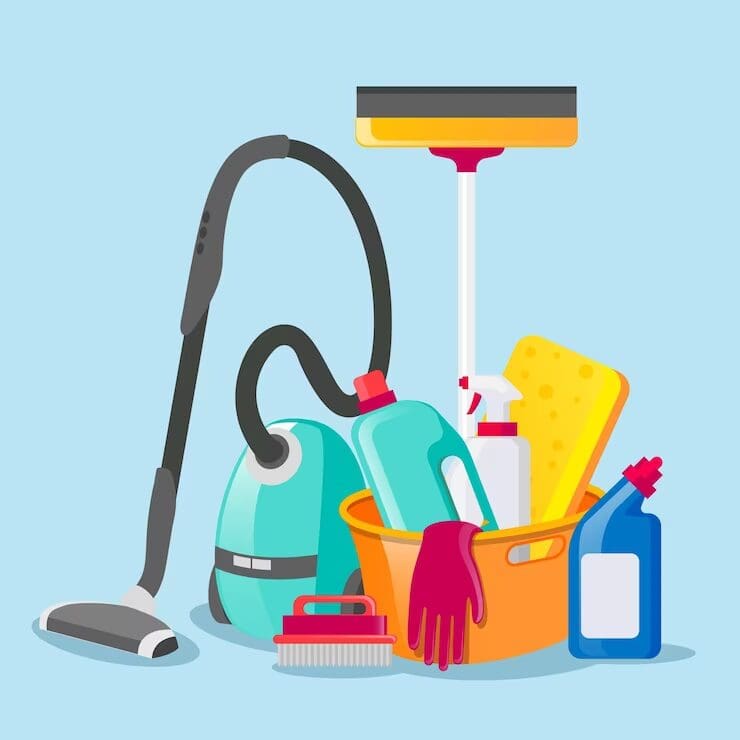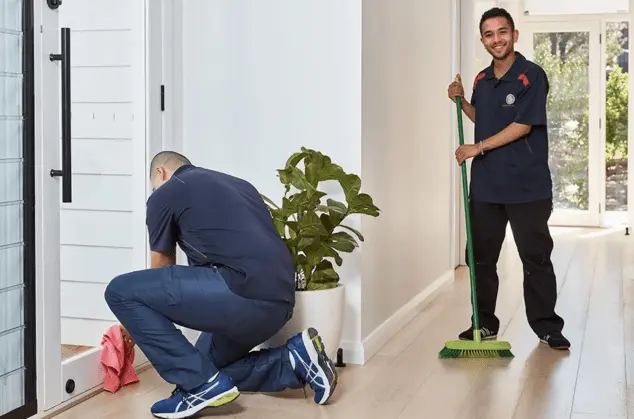The Very Best Everyday Cleaning Practices: Scrub the Surfaces, Vacuum Carpets, and Keep Clutter at Bay
The Very Best Everyday Cleaning Practices: Scrub the Surfaces, Vacuum Carpets, and Keep Clutter at Bay
Blog Article
Recognizing the Need for Thoroughly Disinfecting and Disinfecting Often Touched Surface Areas in High-Traffic Areas
In the realm of public wellness and security, the meticulous sanitation and sanitization of frequently touched surfaces in high-traffic locations stand as paramount procedures in avoiding the spread of hazardous microorganisms. The importance of this practice prolongs much past plain cleanliness, delving right into the world of disease prevention and community wellness. By exploring the various elements of surface area disinfection, from the risks connected with neglecting cleaning methods to the efficient techniques that can be used, a clearer understanding emerges of the important role these practices play in securing public health and wellness. As we browse this discussion, it ends up being obvious that the effects of complete surface area sanitation resound not only within the confines of a certain setting yet additionally reverberate on a more comprehensive scale, influencing the health and wellness of individuals across varied common settings.
Relevance of Surface Disinfection
Emphasizing the complete disinfection of high-traffic surfaces is critical in preserving a sanitary atmosphere and avoiding the spread of hazardous virus. High-touch surface areas such as door takes care of, light buttons, lift buttons, and countertops work as reproducing premises for infections and microorganisms. Regular disinfection of these surface areas is crucial to minimize the danger of contamination and transmission of illnesses.
By applying a durable sanitation procedure, organizations and organizations can create a more secure atmosphere for site visitors, customers, and staff members. Appropriate surface area disinfection not just reduces the spread of transmittable conditions however additionally instills confidence in the cleanliness and security of the premises. This proactive approach shows a dedication to health and wellness and wellness, which is especially essential in high-traffic locations where the possibility of exposure to pathogens is heightened.
Additionally, surface disinfection plays a crucial function in general infection control approaches. Integrated with hand health practices, wearing masks, and preserving physical distancing, thorough disinfection of high-touch surface areas develops an extensive defense against the transmission of hazardous microbes. Prioritizing surface area disinfection is an important part of an all natural approach to health and security in shared rooms.
Dangers of Disregarding Cleansing Practices
Neglecting thorough disinfection of high-traffic surfaces significantly increases the threat of bacterial and viral contamination, positioning a significant hazard to the health and wellness of people often visiting these rooms. Failing to apply correct cleansing methods can lead to the buildup and spread of damaging microorganisms, including infections and microorganisms, on frequently touched surface areas such as doorknobs, handrails, lift buttons, and counter tops.

Moreover, neglecting the significance of thorough cleaning not just jeopardizes the well-being of individuals yet additionally threatens efforts to preserve a clean and sanitary setting. It is critical to acknowledge the value of correct sanitation methods in stopping the spread of infections and securing public wellness.
Efficient Disinfection Methods
To preserve optimum sanitation and minimize the risk of contamination on high-traffic surface areas, utilizing efficient sanitation methods is important. One of one of the most effective and typical sanitation techniques is making use of chemical disinfectants. These items can differ in strength and composition, with some targeting details pathogens like germs or viruses. It is vital to follow the manufacturer's directions for proper dilution, contact time, and ventilation when utilizing chemical disinfectants to ensure their performance - Clear Out Any Clutter.
One more reliable approach is making use of UV-C light. UV-C light has been revealed to be effective in killing a wide variety of microorganisms by disrupting their DNA framework, hence preventing them from reproducing. It is necessary to make use of UV-C light correctly, making certain that the correct strength and exposure time are applied to accomplish the preferred disinfection results.
Furthermore, employing heavy steam cleansing as a disinfection technique can be extremely efficient, especially on surfaces that are heat-resistant. Steam can pass through permeable surface areas and eliminate microorganisms, infections, and other pathogens efficiently. When using steam cleaning, it is necessary to make sure that the surface area reaches the called for temperature level for an adequate amount of time to ensure proper disinfection.
Effect On Public Health
The upkeep of high standards of cleanliness and sanitation on high-traffic surfaces plays an important duty in guarding public health. Regularly touched surface areas in areas with high footfall, such as doorknobs, hand rails, lift switches, and bathroom centers, serve as breeding grounds for unsafe virus.
In high-traffic areas like airports, colleges, hospitals, and public transportation systems, the effect of extensive disinfection measures can not be understated. Focusing on the sanitization of regularly discover this info here touched surfaces is a proactive approach to advertising public health and enhancing the safety of people in shared areas.
Implementing Normal Cleaning Protocols
Immediately setting up and sticking to a constant schedule of cleansing methods is critical for maintaining the tidiness and security of high-traffic surfaces. Routine cleaning methods are vital in preventing the accumulation of germs and microorganisms on often touched surfaces, especially in locations with high foot traffic. By applying an organized technique to cleaning, companies can effectively decrease the risk of disease transmission and produce a much healthier setting for staff members, customers, and the public.
To develop a reliable cleansing routine, it is vital to identify high-traffic locations that need constant focus. These areas might consist of doorknobs, handrails, elevator switches, bathroom facilities, and common devices. Carrying out a regular cleaning regimen that targets these surfaces several times a day can considerably reduce the spread of damaging germs and viruses.
Furthermore, using ideal cleansing representatives and anti-bacterials is vital to ensuring that surface areas are completely disinfected. Regular training of cleansing team on correct cleansing strategies and the relevance of adherence to the cleansing timetable is additionally important in keeping a hygienic atmosphere. By prioritizing consistent cleansing methods, organizations can promote the health and wellness and health of people who communicate with these high-traffic surfaces.

Conclusion
In verdict, it is vital to focus on thorough sanitation and sanitization of frequently touched surface areas in high-traffic areas to avoid the spread of hazardous pathogens and preserve public wellness. It is imperative to recognize the significance of preserving clean surface areas in high-traffic areas to ensure the wellness of the area.
In the realm of public health and wellness and security, the careful sanitation and sanitization of regularly touched surfaces in high-traffic locations stand as extremely important measures in preventing the spread of dangerous microorganisms. By checking out the different elements of surface area sanitation, from the risks associated with disregarding cleaning procedures to the effective more approaches that can be utilized, a clearer understanding emerges of the vital role these practices play in protecting public wellness.Additionally, utilizing heavy steam cleaning as a disinfection technique can be extremely efficient, especially on surfaces that are heat-resistant. When using heavy steam cleaning, it is crucial to ensure that the surface area reaches the called for temperature level for an adequate amount her response of time to ensure correct sanitation.
In final thought, it is vital to focus on extensive sanitation and sanitization of often touched surface areas in high-traffic areas to protect against the spread of unsafe virus and preserve public wellness.
Report this page